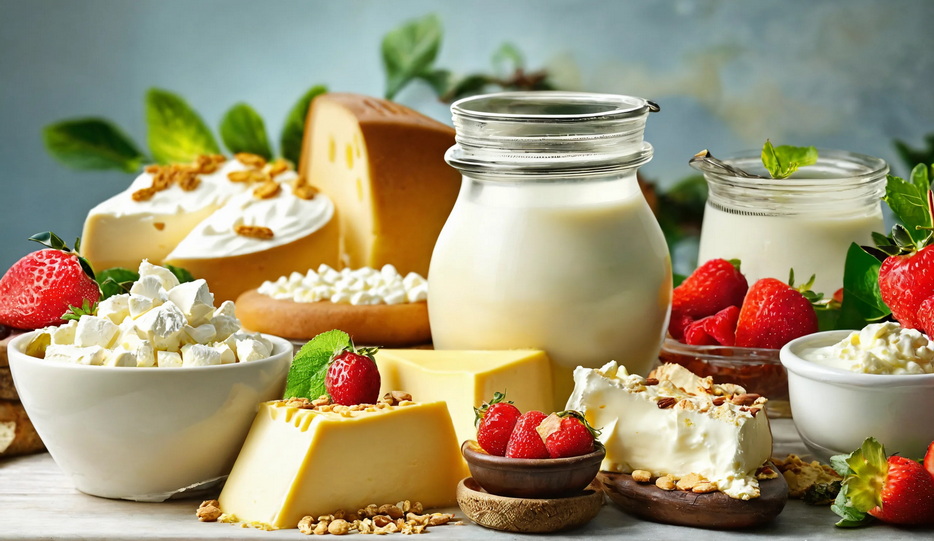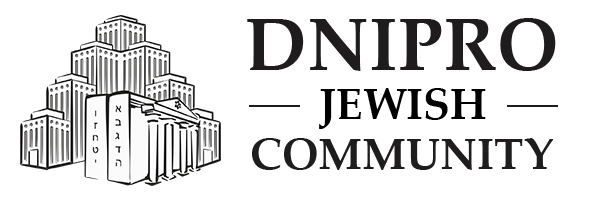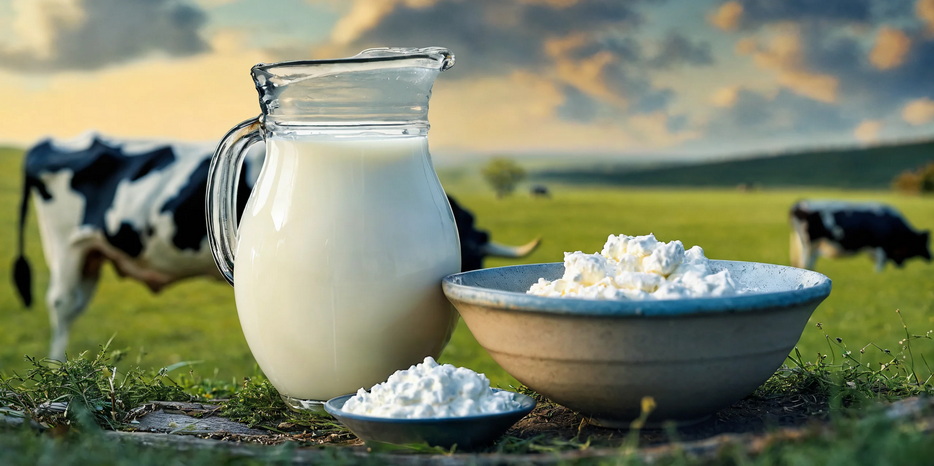As is well known, on the holiday of Shavuot (this year celebrated on June 2 and 3), when the Jewish people mark the anniversary of the giving of the Torah by G-d on Mount Sinai, it is customary to eat dairy dishes. This tradition has many different explanations.
The most widespread explanation is that before the Torah was given, the Jews were unfamiliar with the details of the kosher laws. Immediately after receiving the Torah, they were unable to kosher their dishes and perform other necessary actions required to prepare meat, because the Torah was given on Shabbat. Dairy food, on the other hand, could be prepared much more easily, and the Jews made such dishes in order to immediately demonstrate to G-d their readiness to observe His commandments. This became a tradition passed down from generation to generation.
However, there are also other opinions about the origin and meaning of this custom. And when it comes to the question of which specific dairy dishes are best suited to the holiday of Shavuot, almost every Jewish civilization has its own culinary “take.” The Sephardim think one way, the Krymchaks another, the Mountain Jews yet another — not to mention the Beta Israel and the Jews of Cochin.
The Yiddish perspective on this (in the form of a classic kvetch) was expressed in a monologue by a glutton from the town of Kasrilovka — a monologue that was first overheard, then written down, and finally published in 1904 in the St. Petersburg newspaper Der Fraynd by none other than the esteemed Reb Sholem Aleichem himself — yes, the very one after whom streets are named, including the street where the “Golden Rose” synagogue stands.
This monologue was initially titled The Dairy Feast, later Dairy Food, but the name is less important than the text itself. If you’d like to read it again, you can easily find its Russian translation online (though the best-known translation is often criticized for excessive “Slavicization” — why call Shvues “Semytsya,” or “The Seventh”?).
It is with a fragment of this monologue that Aryeh Olman began his unique exploration of the “dairy issue,” published several years ago in the magazine Lechaim.
Even if you’ve read it before, it’s worth reviewing again as part of your preparation for the holiday — there’s no such thing as too much of a good thing.
And on the holiday itself, we wish you to enjoy delicious kalabushkes (or perhaps the correct plural is kalabushim? Or even halabushes, if you derive the word from challah and bouchée? We don’t know…).
A Dairy Feast on Shavuot
By Aryeh Olman
“The one who came up with the custom of eating dairy food on the morning of Pentecost was, believe me, a wise man.
There’s nothing better, nothing tastier, nothing fresher or cheaper than dairy food! Yes, it still costs money, but you can’t compare it to meat — meat gives you nothing but meat and bones, whereas milk gives you milk, cottage cheese, butter, sour cream, cream, buttermilk, and whey!
And how many different things can be made from dairy products! From meat, you can make broth, stew, sweet-and-sour, or roast — that’s it.
But with milk, you can cook milk porridge, milk noodles, rice in milk, dairy dumplings, dairy kalabushkes, dairy vermicelli — not to mention milk itself. And the things you can make from cottage cheese and butter! Just think: dumplings, pierogi, pancakes, pies, cheese cakes, casseroles, crepes, gnocchi, blintzes, fritters, buns, pancakes, and pastry twists…
And that’s not even all — there are so many other dishes I can’t remember them all, like: cheese vatroushki, butter porridge, fish in butter, dairy borscht, fermented baked milk, and cream. No one would turn down such a delicious table — only a fool, someone who ought to be fed straw instead.”
(“Dairy Food,” 1904)
That said, the character delivering this monologue is only a potential glutton:
“If a drop of milk could be found for seasoning — fine! If not — no big deal, we’re grateful the borscht was at least cooked in a pot that once held milk. My whole gang, give them the chance and they’ll drink so much milk — not two, not even three goats would be enough. And me? I own only half a goat…”
Let us now try to briefly describe the many customs associated with the culinary aspect of this holiday — a shining star, metaphorically speaking, in the gastronomic heavens of Jewish life.
Most of our readers are descendants of Ashkenazi communities from Lithuania, Belarus, and Ukraine, where it was customary to bake cone-shaped cakes in the form of Mount Sinai and to make cheese blintzes rolled like a Torah scroll. In our regions, it is also customary to make strudels, knishes, and to eat meatless borscht with sour cream, cold soup — kholodnik — or green cabbage soup.
In many Eastern European communities, triangular pastries were also baked, based on a teaching from the Jerusalem Talmud (Shabbat, ch. 8):
“A three-part Torah (Torah, Prophets, Writings) was given to a threefold people (Kohanim, Leviim, and Yisraelim) by the third child (Moses, the third in his family) in the third month (Sivan), on the third day of separation (from the third of Sivan the people began preparing for the giving of the Torah).”
In Germany, for example, there was a custom of baking a special “prize” cheesecake called kaulekh (a form of kulich) for those children who had not forgotten to count the Omer even once from Pesach to Shavuot. Among Jews from Eastern communities, it is customary to eat salty sheep cheese and to bake pies with cheese and spinach. Interestingly, both in the Frankfurt-am-Main community in Germany and among Sephardic communities of North Africa, people would prepare special meat or dairy dishes shaped like a staircase or a seven-tiered pyramid — in memory of the Seven Heavens that G-d revealed during the giving of the Torah.
The custom of eating dairy dishes on Shavuot is observed even in distant Jewish communities such as those in Kurdistan. There, Jews traditionally eat “glul” – a rice and milk porridge, “mdira” – a porridge made from crushed wheat and milk, “kutile” – dumplings with a buttery filling, and “kadi” – triangular pastries filled with cheese. In Tunisia, too, there is a custom of eating dairy in the morning of Shavuot, which is quite unusual since Tunisian Jews generally avoid dairy meals. Moroccan Jews traditionally save several pieces of matzah from Passover, crush them, mix them with milk and honey, and eat them after morning prayers—before the main meal—fulfilling the verse: “Honey and milk are under your tongue” (Song of Songs 4:11).
In Chabad and many other Hasidic communities, to avoid the various complications related to separating meat and dairy, the obligation to eat meat on Yom Tov, and issues with blessings, the custom is to eat a dairy meal in the morning after Kiddush—without bread—and then to have the full meat meal later in the day.
Let us try to understand the origins of this custom. The first halachic authority to mention the dairy meal as a Shavuot tradition is the great Ashkenazic posek Rabbi Moshe Isserles (Rema), in his glosses to the Shulchan Aruch (Orach Chaim 494:3). Sephardic halachic works do not reference this custom, which makes sense—it is a folk tradition that does not originate in the Talmud or in the rulings of Rambam. Still, the explanation offered by the Rema is worth study. He writes that the two separate meals—dairy and meat—are meant to commemorate the two loaves (Shtei HaLechem) that were offered in the Temple on Shavuot. The idea is that one first eats a dairy meal, and later a meat meal, which requires using two different loaves of bread, since one cannot use the same bread for both meat and dairy.
However, as Rabbi Chaim Charlap, head of the Beit Zevul yeshiva, rightfully notes, this commemoration is only valid if the dairy meal is followed by a meat one—because only then are we required to use a second loaf of bread. In practice, though, many people eat only a dairy meal.
Rema also offers another explanation: Shavuot is the culmination of Passover—the final peak of the Exodus. Just as during the Passover offering in the time of the Temple, people ate two types of sacrificial meat—the Passover lamb and the festival offering (Chagigah)—so too on Shavuot, we have two types of meals: dairy and meat.
The Be’er Heitev, a commentary on the Shulchan Aruch, presents a different explanation. A Midrash relates that when Moses ascended to the heavens to receive the Torah, the angels opposed him, arguing that the Torah should remain in Heaven, since humans are sinful. G-d told Moses to answer them. Moses said: “The Torah states, ‘You shall not cook a kid in its mother’s milk’—but you [angels] violated this commandment when you visited Abraham!” (see Genesis 18:8). Thus, since it was through a law concerning meat and dairy that the Torah was ultimately given to mankind, we commemorate it by eating dairy.
But this explanation is also incomplete. The Torah commentary Da’at Zekenim on Genesis 18:8 points out that this Midrash contradicts other rabbinic teachings which say that Abraham kept all the commandments of the Torah. Therefore, he would not have served dairy and meat together. Rather, he served dairy first and meat later. If that’s the case, then Moses had no reason to accuse the angels—and the basis for the dairy meal remains unclear.
Rabbi Israel Meir Kagan, known as the Chafetz Chaim, in his work Mishnah Berurah (494:12), offers the following explanation: When the Jews received the Torah at Mount Sinai, they were instructed to keep kosher dietary laws, including proper ritual slaughter (shechitah). All of their cooking utensils were rendered non-kosher, having been used improperly until then. Upon returning home after the Revelation, they had no choice but to eat dairy, since preparing kosher meat would take time. Thus, we eat dairy on Shavuot to remember this. This explanation is also cited in the book Geulat Yisrael.
Yet this explanation too raises a question. The Talmud (Shabbat 86b) teaches that the Torah was given on Shabbat. Why, then, does the Mishnah Berurah say they didn’t have time to prepare meat? They wouldn’t have been allowed to cook or slaughter animals on Shabbat regardless. Perhaps this reasoning is based on the opinion of Rabbi Elazar ben Azariah, who held that the Torah was given on a Friday (see Pirkei de-Rabbi Eliezer, ch. 46).
The commentary Magen Avraham on the Shulchan Aruch (Orach Chaim 494) brings a fascinating explanation from the Zohar, the foundational text of Kabbalah. The seven weeks from Passover to Shavuot, during which the Jewish people spiritually purified themselves, are likened to the seven clean days of a woman’s purification. And since nursing women usually do not menstruate, milk is a symbol of purity in the Zohar—making dairy appropriate for Shavuot.
A similar explanation is offered by the Bnei Yissaschar: Milk, in its whiteness and purity, reflects the grace of G-d, who gave us the Torah.
The Torah itself is compared to honey and milk, as it is written: “Honey and milk are under your tongue” (Song of Songs 4:11), which is understood to refer to the sweetness of Torah in the mouths of its students. Thus, the giving of the Torah is marked by a dairy meal sweetened with honey. This is noted in the Chok Yaakov, who quotes the medieval custom-book Kol Bo.
The Midrash Bamidbar Rabbah (1:8) teaches that Mount Sinai had six names, one of which is Gavnunim (Psalms 68:15), because it was “as white as cheese”—gevina in Hebrew. Thus, we eat cheese on Shavuot (Otzar Dinim u’Minhagim, p. 394).
According to another Midrash, Moses was born on the 7th of Adar, and his mother hid him for three months. She then placed him in a basket and floated it on the river. Pharaoh’s daughter found him, but he refused to nurse from non-Jewish wet nurses. This took place three months after the 7th of Adar—on the 6th of Sivan, the future day of the Giving of the Torah. In memory of that, we eat dairy on Shavuot (Sefer Mat’amim, p. 30).
In the Kuntres Acharon appendix to the book Ta’amei HaMinhagim, the author Rabbi Avraham Yitzchak Sperling of Lviv quotes the Admor Rabbi Nachum Aharon Rokach, who in turn heard it from the famed Kabbalist Rabbi Shimshon of Ostropoli: Before the Torah was given, Jews refrained from eating dairy because they believed—based on the Talmud (Bechorot 6)—that milk was considered a part of the living animal and therefore prohibited to the descendants of Noah. Only after receiving the Torah did they learn that milk is permitted—as Israel is described in the Torah as “a land flowing with milk and honey.” Thus, dairy became permissible only after the Giving of the Torah.
Another explanation: The Torah teaches humility, and in ancient times, it was studied while sitting on the bare ground. Therefore, on Shavuot we eat simple, modest food—dairy—considered the food of the poor. This is the teaching of the renowned Hasidic tzaddik Rabbi Pinchas of Koretz, as cited by Rabbi Shmuel Pinchas Helbard in the encyclopedia Otzar Ta’amei HaMinhagim (p. 305).
And here are two more “textual” explanations. The initial Hebrew letters of the words in the Torah verse “A new grain offering to the L‑rd on your Shavuot” (Numbers 28:26) form the word “milk” (chalav) in Hebrew. This notarikon (acrostic) is noted in the footnotes to Sefer HaMinhagim (p. 16, note 49) and is also mentioned in Aruch HaShulchan (Orach Chaim 494:5). Additionally, the author of Sefer Mat’amim (p. 30) observes that the numerical value (gematria) of the word chalav (milk) is 40—corresponding to the forty days Moses spent on Mount Sinai.
This custom can also be explained by the juxtaposition of Torah verses. In Exodus 34:26, it says: “The first of the first fruits of your land you shall bring to the house of the L‑rd your G‑d.” Immediately following this is the commandment: “You shall not boil a kid in its mother’s milk.” Milk thus appears right next to the verse about first fruits—which, according to tradition, are brought specifically on the holiday of Shavuot. This explanation is found in Sefer Mat’amim (p. 30), quoting the famous author of Shnei Luchot HaBrit.
The abundance of interpretations surrounding a single custom often suggests that none of them is truly primary or original. And so, a simple Jew eating cheesecake or blintzes on Shavuot might have just one essential reason in mind for this ritual:
Because it’s delicious!





